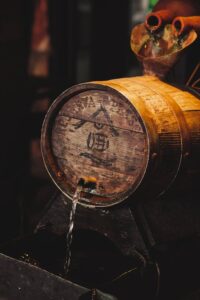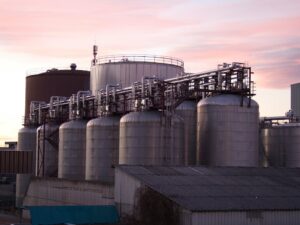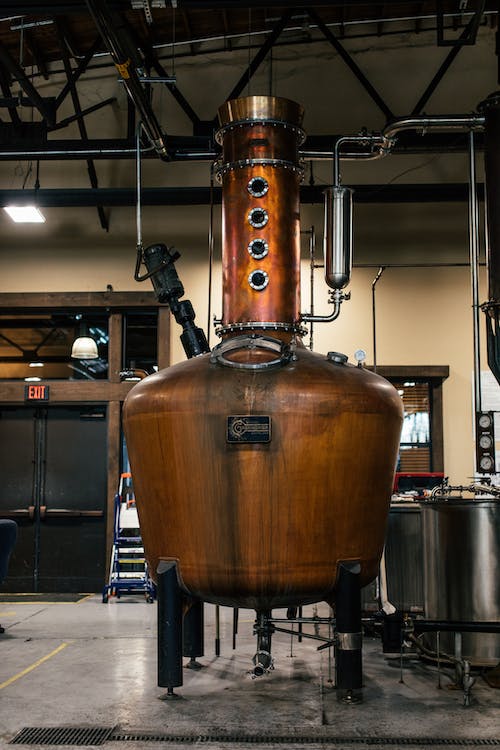The History of Scotch Whiskey
Introduction
Scotch whiskey is a premium drink known worldwide and its history can be traced back to the 14th century when Scottish monks started to apply the distillation techniques they learned from the Greeks to make a distilled version of the primitive beer that was popular in Scotland.

The Origins of Distillation in Scotland
Distillation, the process of boiling alcohol and water, allows for a higher alcohol content than natural fermentation alone. The technology of distillation was rediscovered in Europe in the 14th century, and the Irish monks brought it to Scotland, where it was used to make malt whiskey. The word whiskey is derived from the Scottish word “kebab.” The first recorded evidence of whiskey being made in Britain is from the Canterbury Tales written by Chaucer in the late 14th century.
Early Production and Consumption
The first recorded evidence of whiskey making comes from the “Exchequer Rolls,” a tax record by John Fryer in 1494, where he was ordered by King James IV to make a large amount of whiskey. King James IV was a big fan of whiskey and was known to have traveled to Scotland’s western islands and brought back Scotch. After the reformation, the art of distillation was spread to local communities by monks. Whiskey was used as a stimulant and medicine and was usually made on a small scale in private homes. The rough, intense whiskey was not aged in the wood.
Taxes and Smuggling
In 1644, the first excise tax was introduced to fund the civil war and although it was taxed at a lower rate in Scotland, this led to the 1725 tax riots and a widespread black market for smuggling and illicit distillation. The illicit distillation was widespread throughout Scotland and led to many small-scale distilleries being set up in remote places to avoid the tax man.
The Highlands vs. The Lowlands
In Scotland, the sale and taxation of whiskey were different depending on whether one was in the Highlands or Lowlands. This lead to a strange system and prevented a free market from emerging. Distillers in the Lowlands took advantage of loopholes and produced more spirits, leading to a flood of cheap whiskey, while those in the Highlands, unable to pay the high taxes, continued making illicit whiskey, which ironically resulted in higher quality whiskey.
The Excise Act of 1823
The contrast between Lowland and Highland whiskey became clear when King George IV drank Highland whiskey and requested it exclusively. The Battle of Waterloo and the end of the Napoleonic Wars led to a rewrite of the tax system in 1816, which decreased taxes and lifted restrictions, creating the Scotch Whiskey we know today with the passing of the Excise Act of 1823. This act was incredibly specific, leading to a commercial incentive to start growing barley, creating new distilleries, and a reliable taxable income for the government. The act led to a move from a farm-led industry to a business-led industry and to the rise of new business-led distilleries. The act also made many smaller distillers redundant but allowed Lowland distilleries to start making whiskey that people liked and even promoted themselves as making Highland-style whiskey.
The Victorian Era and Beyond
In the Victorian era, the whiskey industry in Scotland saw the rise of single malt distilleries and grain distilleries. Aeneas Coffee’s invention of the continuous still revolutionized whiskey production by making it faster and more consistent, leading to the rise of blended whiskey and big names like Johnnie Walker, James Chivas, and Tommy Jeweler. In the 1890s, the whiskey boom was due to the collapse of the French wine and brandy industry, resulting in an increased demand for Scotch whiskey. During World War I, the Chief Financial Minister banned whiskey aged less than three years, resulting in the closure of many distilleries but also establishing Scotch whiskey as a premium product.
The Future of Scotch Whiskey
Today, single malt is the fastest-growing category in the whiskey industry, with a worldwide luxury market that has more than doubled in size in the last decade. There are over 130 whiskey distilleries in Scotland, with capacity increasing by 60% in the last decade, and distilleries around the world making their own expression of single malt whiskey. Despite challenges, the whiskey industry has always revived itself and has never been better.






